Eye Candy (32)
By:
May 12, 2020
This week, Eye Candy looks at an artist magnifying the microbes.

Infectious diseases have been felt for much longer than they have been seen. Sometimes they are felt everywhere, such as during pandemics like the 14th-century Bubonic Plague, the 1918-19 Influenza, and today’s COVID-19. And sometimes they are felt more asymmetrically, such as the introduction of smallpox, measles and other contagions into the Americas from Europe in the early 16th century. But when we finally developed powerful enough microscopes to fix them in view, many were surprised by what they saw. The tiny microbes had their own odd aesthetic appeal; some looked very organic (like the “raccoon eyes” of smallpox) while others resembled tiny machines or crowns (the ubiquitous “crown of protein spikes” of our current antagonist).
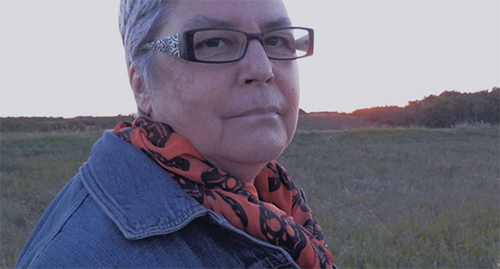
Ruth Cuthand is a Plains Cree artist born in Prince Albert, Saskatchewan, whose work addresses the cultural and cognitive dissonance of beautiful things that do much harm. Using painstaking, delicate beadwork, she constructs much-magnified versions of electron microscope scans of bacteria and viruses in glistening, iridescent colors, keeping to the circle that represents the bounding of the microscope’s eye.

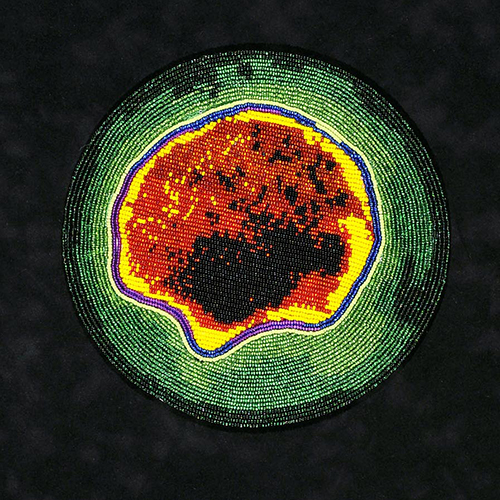

From Cuthand’s Trading series:
“Beads and viruses go hand-in-hand; new diseases and goods that traders brought to the Americas. Trading is a series of 12 images of viruses brought by the Europeans and new disease that was brought back to Europe. The new diseases consisted of influenza, bubonic plague, measles, smallpox, typhus, cholera, scarlet fever, diphtheria, chicken pox, yellow fever and whooping cough. The disease that was taken back to Europe was syphilis; this image is in quillwork.”
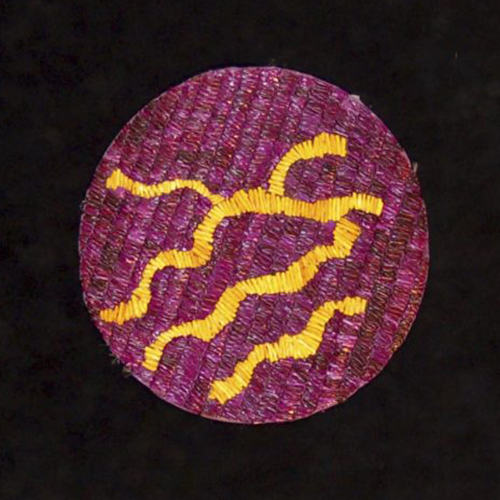
Because of course many of the effects of these tiny invaders were predicated by, and dependent upon, not-so-tiny invaders, such as the European colonists who, post-Columbus, set up shop in the New World, carrying with them the diseases of the old. For centuries, the cities, farms, and trade routes of Eurasia had acted as supercharged petri dishes for infectious diseases to jump species, take hold, mutate and strengthen. Then when inadvertently introduced into an unexposed population, indeed unexposed continents, they raced through like wildfire, taking out (by some estimates) almost 90% of the current residents. The European colonists didn’t know they carried this weapon (mostly), but they used other weapons intended for the same purpose, to subdue and conquer.

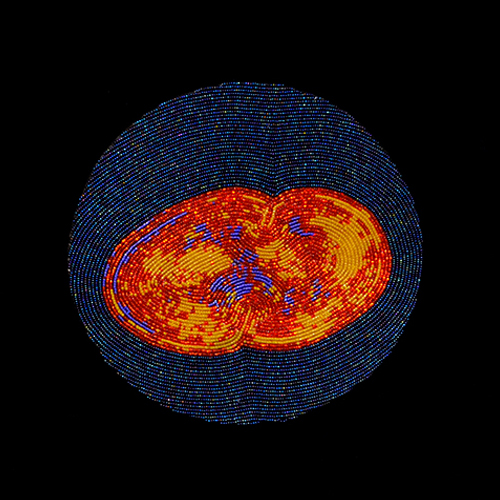
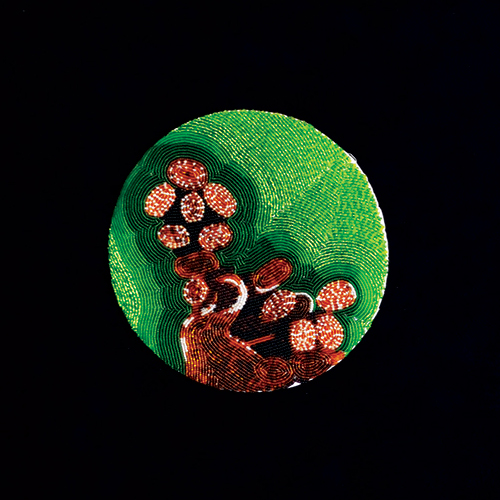

From Cuthand’s Artist Statement:
…at the age of eight I met artist Gerald Tailfeathers and decided that I, too, wanted to be an artist. As a child, my first art materials included the orange paper that was discarded in the processing of the Polaroid chest x-rays that we were subjected to annually as students in routine tuberculosis screenings; they collected the peculiar-smelling 18-inch squares of paper and gave them to my Anglican minister father for use in Sunday school.

Cuthand’s most recent work involves beading COVID-19 scans onto masks. All her beaded diseases highlight the formal beauty of these dangerous creatures in a medium (beads) that was also introduced to this country from afar, as a way of making them her own, of fixing them in view, of saying, we see you now. By this gesture, comprised of equal parts agency and hope, Cuthand repurposes the cognitive dissonance of both medium and message into something beautiful.

HT to @funnomad and @jr_carpenter.
Ruth Cuthand: website
The Gallery / Art Placement Inc.
Canadian Art in the Time of Coronavirus
The Capilano Review: Ruth Cuthand
Colossal: Beaded Images of Disease Explore the Impact of Colonial Trade
